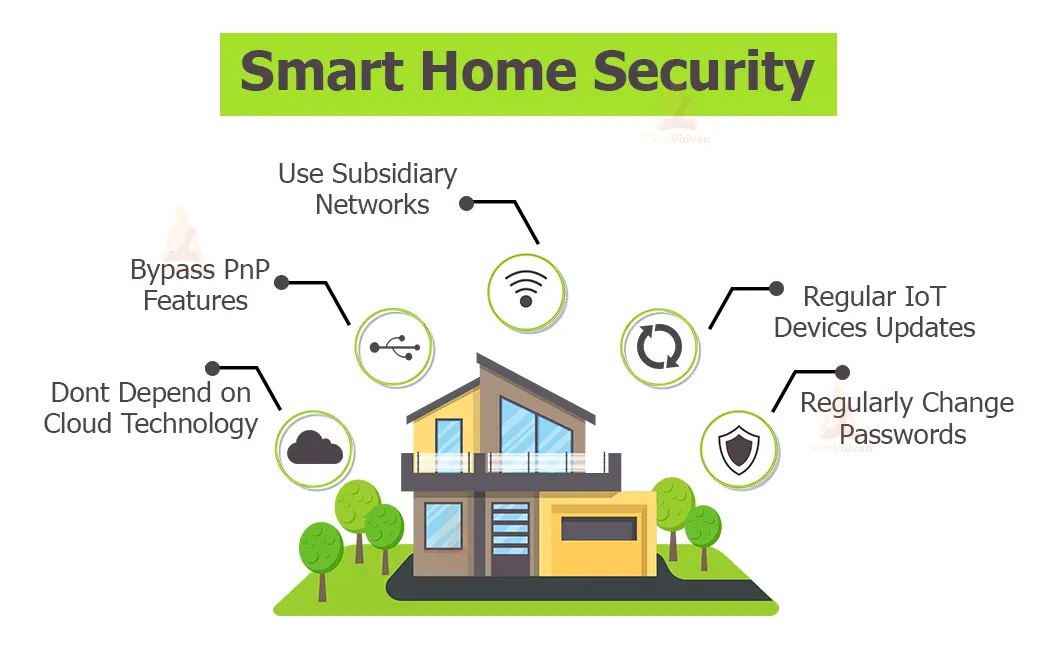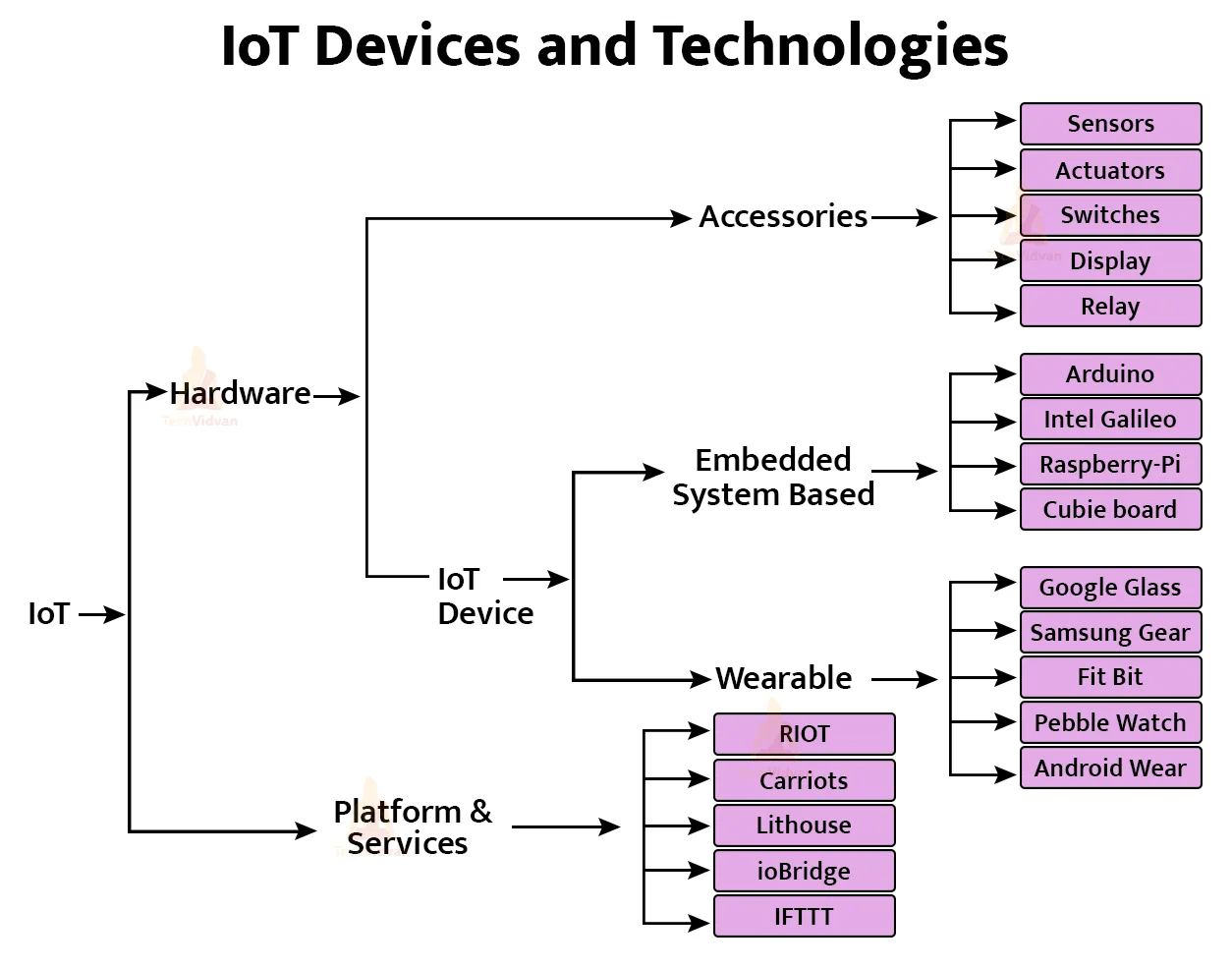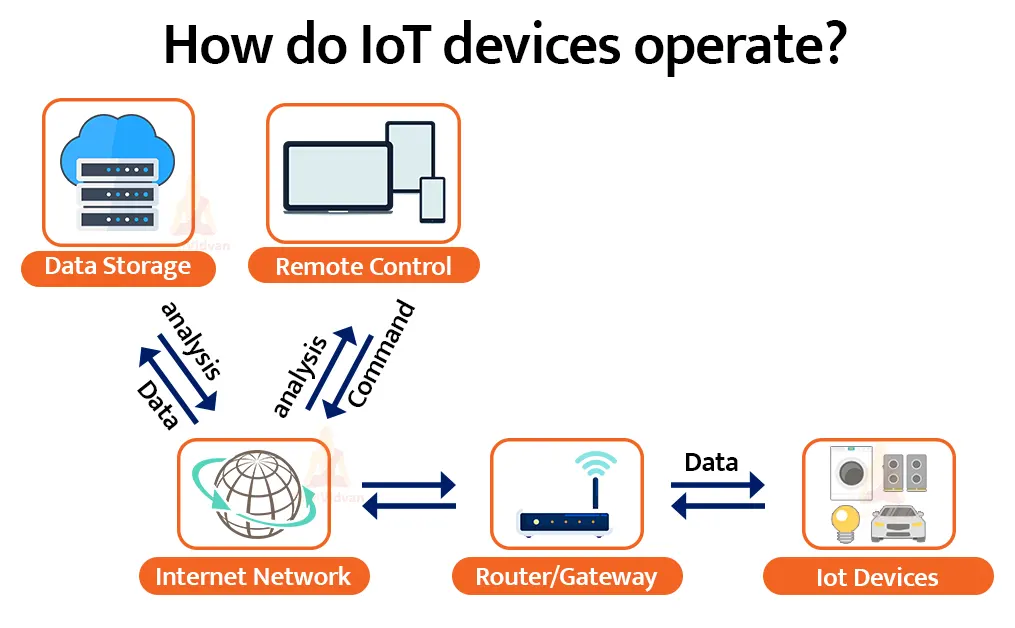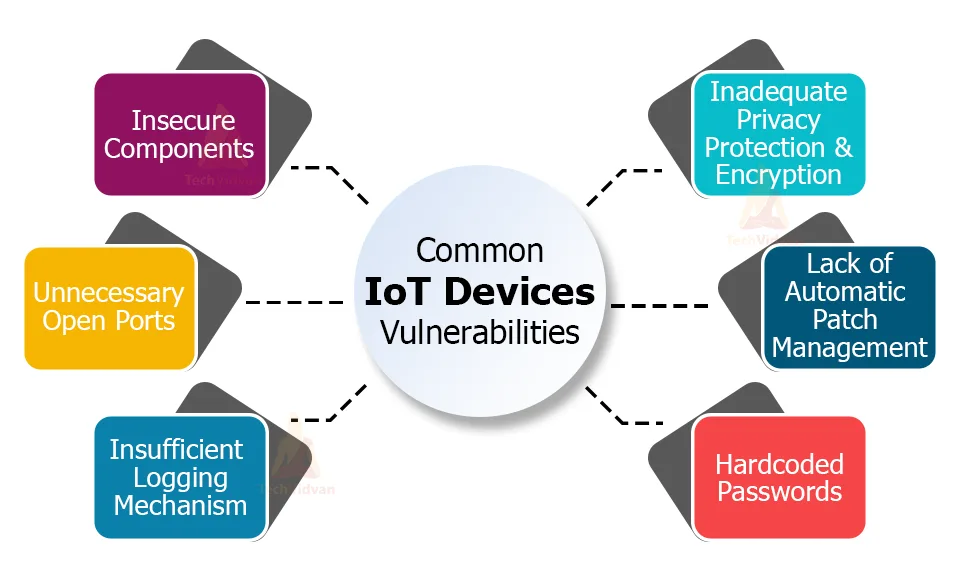What are IoT Devices?
The devices that are capable of connecting to a network via the internet are known as Internet of Things devices. The IoT devices do not include the traditional computers such as the laptops and computers.
There was a time where it was only possible to connect standard computers to the internet. But, today, any digital appliance capable of generating huge amounts of data and connected to the internet falls under IoT devices.
In this article, we will view a detailed understanding of IoT devices.
IoT devices are usually embedded in other devices. When you put in some Internet of things technology in a device, it becomes an internet of things device. For example, a smart car is also a car but it is embedded with IoT technology.
Complex functionality and computational technology embeds IoT devices. The user need not deal with the complexity at the interface. The main purpose of IoT devices is to improve the functioning of the particular devices. The user can look into the working of the device at the interface easily. IoT devices are continuously connected to the internet.
Examples of IoT devices could include all devices capable of connecting to the internet such as home appliances, digital cameras, TVs, cellphones and so on. IoT devices are highly efficient and reliable. The main purpose of IoT devices is to generate quicker results.
Types of IoT devices
Any device that can receive or transfer data and can communicate through a network is capable of becoming an IoT device or a “thing”. In addition, the device should hold a purpose like delivering information or giving outputs.
General procedure categorize IoT devices into three types:
1. Consumer connected devices
Customers used consumer connected IoT devices. They could be your home appliances except that these devices have improved functionality. Examples include smart cars, smart tvs, smart speakers. A smart home is another example of a consumer based IoT device.
Smart homes operate on devices that are constantly connected to the internet. They sense and receive large amounts of data and perform complicated tasks. Iot devices perform these tasks and hence aim to make human lives much easier.
2. Enterprise devices
These devices are used in the business sector. These devices include sensors that are situated in conference halls. The sensors perform functions such as taking down the attendance of the employees present in the hall, summarizing the presentation, regulating temperature levels, tracking the time and further on.
When employees and business managers enter a meeting hall these sensors activate the ACs, count the number of employees, turn on the lights, turn on the speakers and load the powerpoint.
3. Industrial IoT
These Iot devices are found on an industrial scale and perform much more complicated tasks than the other two types of devices. They are located in godowns and industries. IoT devices that track the temperature of the freezer to make sure the meat doesn’t spoil is one example of Industrial IoT devices.
These devices monitor repetitive manufacturing processes in an assembly line and various other processes. They ensure proper functioning of machines in the industry. They send notifications to alert the company in case of refills or accidental hazards. Since the problem diagnosis occurs at an early stage this saves the company from much bigger damages.
IoT smart objects
Smart objects do everything a regular digital appliance does and in addition they also improve their functionality by networking with other devices via the internet. Any object that can connect to the internet qualifies as a smart object. From our daily life, we can include examples such as Televisions, Cars, Thermostats, Microwaves and Geysers. The following are a few well-known IoT smart devices:
1. Amazon Echo
Amazon Echo responds to the word “Alexa” and it is an IoT induced technology developed by Amazon. It is an AI based personal assistant that does a variety of things. It responds to questions, it connects with the smart home, it can play music, it can perform calculations, it can note down important dates and events and set reminders. This does all the functions a regular speaker does and in addition it does much more than that.
2. Samsung gear fit
Samsung fitness bands are another great example of IoT devices. These watches look like a regular watch, they do everything a regular watch does and more than that. They connect to your mobiles and laptops. They are capable of answering your phone calls, measuring your heart beat, counting the number of steps you take and even your daily calorie intake. It is an entire health package that fits on your wrist.
3. LG SmartThinQ
Smart TVs are typical IoT devices. A smart TV connects to the internet and offers so much more than a regular TV. You can connect your phones to the TV, you can download and run applications, you can browse the internet and you can control your smart home through your TV.
4. Smart TV
Smart TVs connect to our phones and tablets and one can send videos and images to display on the TV. You can control your room temperature, check the status of your fridge, monitor your garage and so much more with a TV. Ofcourse, the smart Tv does everything a regular TV would do but in addition the TV does much more to make our lives easier.
5. Ecobee Smart Thermostat
The Ecobee thermostats are smart thermostats that offer a wide range of functionality. The thermostat is a touch screen device and it supports Alexa voice control. You can control the temperature of your house by sending voice instructions to Amazon’s Alexa. It also comes with a remote room sensor that sets the temperature accordingly.
The device compares the room atmosphere with the temperature outside and adjusts accordingly. It also has the capacity to connect with other smart home objects. The device connects to the Wi-Fi and allows third-party integrations. The device has humidity, temperature and proximity sensors to sense human presence.
Amazon Smart oven
This Iot device is a breakthrough in the range of traditional ovens. It is simple to operate these ovens, as simple as saying “Alexa preheat the oven” to preheat the oven even if you are a few miles away from. The oven has a scan-to-cook feature where you can scan the food items and the oven takes care of the rest of the cooking procedure.
One does not have to check up on food to make sure it doesn’t burn as the oven works accordingly. It looks like any regular oven but does much more than traditional ovens. It connects to the WiFi and the user can use an application to operate on the device from far away.
IoT boards
Following is the list of well-known IoT boards available in the market:
1. Arduino Device
These are compact microcontrollers. They are IoT kits that sense changes in the physical surroundings. There are a number of input output pins, USB and ethernet ports. They are used to construct an entire IoT device.
More on Arduino is given in our upcoming articles. Make sure to check it out.
2. Raspberry Pie
Raspberry Pie is an entire computer on one single board. This is the most common IOT device and IoT kit available in the market these days. They are low cost, easily programmable and produce quicker results. They have a number of input output pins to connect devices externally. The device connects to sensors and it transmits data to server clouds.
3. ESP8266
This is a low cost, compact, highly efficient, portable device. There is a range of ESP8266 available in the market to fit your needs. They are designed specifically for IoT applications. They are capable of networking and transmitting data via wifi. These analyse data ranging from simple to complex calculations. They use IoT P2P connectivity and they can access pages written in HTML.
4. Sense Hat 8×8 RGB LED Matrix
It is a sensor developed by Raspberry pi sense hat. This can sense external changes in the environment. It can sense temperature changes, humidity changes and rescind to these innate changes. It can sense changes in speed and pressure.
5. Bluetooth Module HC-05
This is a 6 pin IoT device that communicates through wireless connection. It is used in building IoT projects. It often communicates via serial connection and it is easy to connect to laptops, mobile phones and PCs.
Properties of IoT devices
It is not necessary that every IoT device perform the same set of tasks. However, all IoT devices must have some common functionality to be qualified as IoT devices. They are
- Sense: An IoT device must be capable of sensing its physical surroundings. It must be able to retrieve the data from external surroundings.
- Sense and receive data: The data and information that an IoT device collects, it transfers to other devices via a network or connection.
- Analyze: Collecting data is meaningless if one cannot operate on it. Therefore, an IoT device must be able to analyse the data that it collects.
- Controlled: There must be a mechanism that ensures that an IoT device is under the direct control of the end user. Otherwise it may lead to system failure or even hacking.
IoT devices flowchart
How do IoT devices operate?
Through regular smartphones, one can install applications that operate IoT devices. You can use your mobile phones to interact with your smart TVs, smart cars, smart thermostats etc.
Suppose, you are at work and you are not sure if you turned off the smart AC in the morning. Instead of driving all the way back home, you can use your mobile phone to check whether you switched off the ACs. You can also keep check the condition of your ACs, schedule a maintenance check or keep a track of fuel refill.
IoT devices contain sensors and actuators embedded in their insides. These sensors collect the data in its surroundings. Machine learning technology acts on this data and generates outputs based on the intel received from the sensors. Machine Learning is a process where you teach a computer to perform and make decisions like a human being. It is possible to teach machines by providing them a few examples.
IoT devices work on an integrated pattern that involves artificial intelligence and machine learning. All of these must go hand in hand in order to ensure proper functioning of your device.
IoT devices are capable of doing so much that was once impossible for any regular machine to do. Today, a smart refrigerator sends an alert on your phone when you are low on eggs, it may even go ahead and order the eggs online for you from a nearby grocery store. It may advise you a diet plan based on your body mass index, it may notify you when the refrigerator is not functioning properly or when there is an imbalance in the cooling system. IoT gave devices this power, the power to do so much more than they previously did.
How safe are your IoT devices?
-“With great power comes great responsibility”
Since IoT involves such a large framework of interconnected devices it is bound to face a lot of challenges. One of the biggest challenges involves the communication of these devices. Device communication involves risks such as safety and security.
Since IoT standards are not universal, protocols and management vary hugely in different applications of IoT. The lack of common standards in IoT gives rise to security threats in the entire process. IoT devices transmit and generate large amounts of data across the globe; user data becomes vulnerable and exposed at a larger level and this may cause data theft and security risks.
Customers may not be willing to invest in a technology that doesn’t guarantee data protection and privacy. IoT devices generate huge amounts of data and remote services located across the globe store the incoming data. Thus there are situations when we may have to compromise on our data safety.

Security and customer privacy play an important role in IoT devices. Adoption of better passwords and proper authentication of the networking system, encryption and cryptography are a few practises to ensure safety standards.
Summary
In this article we learnt what are IoT devices, different kinds of IoT devices and IoT board, properties of IoT devices, how IoT devices works and the safety precautions for proper functioning of IoT devices



